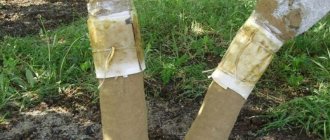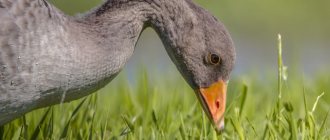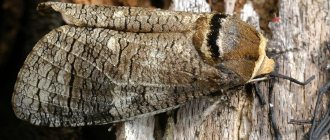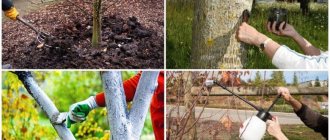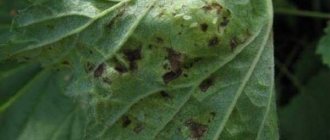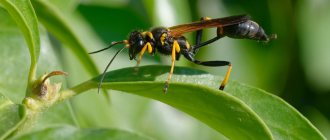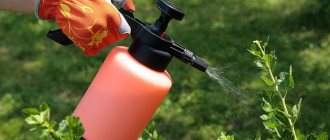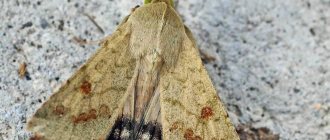Insects cause great harm to trees. They not only destroy leaves, buds, flowers and fruits, but are also carriers of many diseases. There are many ways to control insects. One of them is the use of catch belts, which are easy to make with your own hands. Thanks to their special design, they block the movement of insects along the trunk and provoke their death. This is achieved by various means. Insect catching belts are a biomechanical means of protection that is absolutely environmentally friendly and does not cause any harm to the fruit tree. Hunting belts are both a preventive and protective tool.
Content
- Purpose of hunting belts
- Types of hunting belts
- a) Adhesive (sticky) tree catching belt
- b) Protective hunting belt for trees
- c) Insecticide-impregnated and “repellent” belts
- How to make a catch belt yourself
- Advantages and disadvantages of using insect traps for trees
A catching belt is a simple and at the same time very effective way to protect fruit trees from insect pests. The material discusses the purpose, types of hunting belts, the procedure for their independent production, etc.
Prevention
Preventive measures include care and maintenance of the garden; a mandatory procedure is getting rid of aphids. Do not forget to mulch, sprinkle the crown, feed and water the plantings. The leaves also require care; aphids and honeydew accumulate on them, which must be washed off with water.
Young shoots are the most unprotected, so it is necessary to promptly remove tops and root branches. Don't forget to whitewash the plantings. In autumn and early spring, the bark is cleaned.
Remember that ordinary plants will help repel creepers and attract helpful orderlies, ladybugs, hoverflies, lacewings, earwigs, ground beetles, wasps and others. Birds, which can be attracted to the site by feeding, will also help to cope with the problem.
Remember that in pest control you need to use effective but humane methods of control that will clear the area, but at the same time simply overpower the insects to another area.
Purpose of hunting belts
A trapping belt (a trapping ring) is essentially a mechanical method of protecting plants from insect pests. They are arranged primarily to protect fruit and berry garden plantings from ants or caterpillars of pear, plum, apple moths, and apple blossom beetles, that is, insects that hibernate or pupate under the scales of old bark and in the soil of tree trunk circles.
| READ MORE: THREE main ways to get rid of ants on your property and in the greenhouse |
In addition, in scientific entomological research, trapping belts are used for catching, collecting and studying insects - numbers, population density, the influence of various environmental factors on the morphological features of the structure of individuals, assessing the biotopic diversity of species, etc.
Method of protection against aphids
The method is very simple, but as always very effective: a natural substance comes to the rescue - birch tar. It should be noted that ants do not tolerate strong odors very well. Everything is done very simply: we wrap an ordinary bandage in several layers around the trunk and impregnate it with birch tar. For the whole season you can forget about ants and aphids.
But there is one very important point: although tar is a natural substance, it is nevertheless very aggressive and can damage the bark of a tree. Therefore, before applying tar (or other repellent), wrap the tree bark with plastic wrap or tape. And only then tie the trunk with a bandage or cloth. This will protect the bark from damage by aggressive substances.
And one more thing you need to pay attention to: young trees have smooth bark and the film or tape will fit tightly enough to the trunk, and ants will not be able to crawl under them. Another thing is mature trees
Their bark is lumpy and has many cracks and irregularities, along which it will not be difficult for ants to overcome your trap. What to do in this case? Everything is very simple: cover all the cracks and irregularities in the place where the belt will be installed with garden varnish or simple plasticine.
In addition to ants, such a trap successfully protects against many other pests. In this simple way you can reliably protect your fruit tree for the entire season. Since tar is a highly oily substance, neither rain washes it off nor does it practically dry out in the sun. Of course, if the summer is very hot or very rainy, then we will need to soak the hunting belt with tar again.
Types of hunting belts
Several types of hunting belts are used - adhesive hunting belt, protective and impregnated with insecticides.
a) Adhesive (sticky) tree catching belt
Sticky belts are made using special glue, which is applied either to thick strips of paper, fabric, non-woven material, or directly to the tree trunk with a girdle rim. The mechanism of action is to adhere insects.
This glue is produced in tubes (trademarks “Chisty Dom”, “ALT”, “Napoval”, “Domovoy”, “EUROGARD”, “ECOTRAP”, “ARGUS”, etc.) or in aerosol form (trademark “Green Belt” and etc.). The aerosol form is preferable for use as it ensures uniform application of the adhesive.
Examples of insect repellent glue for catching adhesive belts
The glue itself does not dry, has a long shelf life, remains sticky for a long time and does not change its properties. This is ensured by its polymer base and special composition (polyisobutylene provides moisture resistance, polybutylene is responsible for viscosity and plasticity, cycloisan enhances adhesiveness).
For the convenience of gardeners, it is now possible to use ready-made garden catching belts for trees - these are strips of fabric or non-woven material with an adhesive composition already applied. For example, the brands “Your Economy”, “No-guest”, “ARGUS”, “Kapkan”, “Inta-Vir”, etc. As a replacement, you can use sticky adhesive fly tapes.
Examples of manufactured ready-made adhesive belts for protecting trees
b) Protective hunting belt for trees
The mechanism of action is to delay insects when trying to climb the trunk to the crown of the tree.
The protective catch belt can be dry. The materials for them must be either so smooth that the insect cannot find a point of adhesion to the surface of the belt and falls to the ground, or fixed in such a way that the insect cannot find its way up, for example, as happens when a burlap trapping belt is secured to the top part of the material.
Dry, oil repellent, insecticidal tree belts
Protective belts of this type can also present other obstacles that are difficult for insects to overcome. For example, oil. Ants do not like to overcome oil barriers. The belt is made with vegetable oil on wood, palm width (10-12cm). You can use any vegetable oil (sunflower, linseed, hemp, etc.) or technical machine oil. It is recommended to add stove soot or sharply odorous substances (smoking liquid, diesel fuel, etc.) to the oil composition.
It is allowed to alternate glue strips with oil strips - this results in the so-called “double protection”.
c) Insecticide-impregnated and “repellent” belts
Insects caught in a trapping belt impregnated with insecticides die. For impregnation, insecticides are used that are specialized in killing insects that, according to observations, fall into the trapping belt at this time of year (beetles, caterpillars, ants).
This type of belt also includes “scaring” belts. Tree trunks are tied with strips of fabric soaked in kerosene, diesel fuel or carbolic solution. The pungent smell will completely repel insects. After 10-14 days, as the smell evaporates, the impregnation is renewed. Fabric impregnated with pungently smelling substances can be spread on the soil in tree trunk circles, this is guaranteed to provide protection from insects, including soil-dwelling ones.
The only limitation is that these belts are not recommended for use on young seedlings to avoid burns.
How does a tree catcher work?
The simplest trap is used as a barrier and mechanical catching of garden parasites. It is made in the form of a wide strip (20...30 cm). They use different materials: cardboard, rags, scrap film and others. These devices work effectively against pests whose life cycle involves moving down to the ground and back - from the ground to the crown. This:
- whiteflies, their pupae can only develop on the ground;
- weevils cannot fly and move only along the bark of a tree;
- Caterpillars can crawl; only butterflies can fly. But in the absence of food they die;
- ticks are not able to overcome an obstacle on the trunk of a fruit tree (plum, apple or pear);
- aphids are carried by ants, which also cannot fly.
How to make a catch belt yourself
The work plan for the manufacture and arrangement of trapping belts for trees against garden insects and pests is recommended as follows.
| 1. | It is advisable to equip trapping belts in early spring, while the temperature remains around +5°C, since at values above this indicator, beetles, for example, the apple flower beetle, leave their wintering places and climb the trees. |
| 2. | The place for the hunting belt is first prepared (dry and dead bark is cleaned and removed). |
| 3. | The height of the belt placement is 0.3-0.5...1.0-1.5 m, the number of belts on a trunk or one large branch is 1-2. |
| 4. | A hunting belt in general form is a strip 10-12 cm wide in several turns. The total width of the belt should not exceed 20cm. |
| 5. | The material of the belt is burlap, rags, straw, non-woven material, thick paper, plastic film, etc. It is better to use non-woven material, it is not subject to rotting, dries quickly after rain, and tree bark does not rot. |
| 6. | The material is tightly fixed with twine, twine, rope or wire on a tree trunk or thick twigs and branches in 2 places - above and below the belt, retreating 1.5-2 cm from the edges. It is better to use polypropylene twine. |
| 7. | To ensure a tight fit of the hunting belts, it is recommended to use a foam rubber backing, or better yet, polystyrene foam. The cracks can be covered with clay or plasticine. |
| 8. | It is allowed to make a double belt - from 2 strips, at a distance of 20 cm from each other. Moreover, alternating between glue, or “repelling”, or oil, or two glues, etc. |
| 9. | Glue is applied with encircling rims. Since the glue is very viscous, in order to apply the glue evenly, it is better to slightly heat the tube to 50-60°C, then spread the glue evenly with a spatula. It is much more convenient to apply aerosol glue. |
Plan diagram for the production of catching adhesive belts
If ready-made catching belts are used, then the labor intensity of the process is minimal. It is enough to wrap a ready-made adhesive belt around a tree trunk/branch with the sticky side facing outward with a slight overlap of 2-3 cm. For better fixation, you can additionally tighten it with twine.
The adhesive belt protects the tree throughout the season and does not need to be replaced. However, as they become filled with insects, the sticky belts are renewed.
When is the best time to set traps?
Trapping belts are wrapped and then secured to the trunk using twine or rope in early spring, in March, before pests emerge from the soil.
This must be done before the kidneys awaken, at a time when the first thawed patches appear and the ambient temperature does not reach 5-6 C.
To enhance the effect, hunting belts are often treated with sticky solutions or insecticides.
Ant Traps
They are capable of neutralizing such devices and pests descending from trees for further settlement. Therefore, traps should not be removed after the onset of warm weather. They should be on tree trunks all season from March to October.
The belts are removed only after the first frost. It is not recommended to leave them on trees over the winter - frozen traps can damage the plant bark. After all, even a small amount of moisture accumulated under the fishing belt often leads to the formation of many microcracks.
They are not removed in the fall only in the southern regions of Russia - insects here are able to awaken and be active at any time.
For ants, aphids are a kind of “cash cow”, supplying a sweet milk called honeydew. It is the ants who breed these insects and move them to the best specimens of plants for feeding.
Formwork for the foundation: types, structure, step-by-step DIY production (Photo & Video)
Manufacturing instructions
Application of adhesive composition
Making a trap belt will take you just a couple of minutes:
1Cut a strip up to 20 cm thick from cardboard, film, thick paper or fabric.
2To make a double-sided funnel, its parts must first be glued together. A regular collar belt is cut out in the form of a strip. To make a “skirt,” fold the canvas or cardboard in half and cut out a small notch.
3Wrap the belt tightly around the tree trunk twice.
4Attach it to the trunk using rope or soft wire in two places.
5 Fill the remaining small holes with plasticine, dough, garden varnish or clay.
To protect against hares eating the bark of young fruit trees, you can attach another type of belt to the tree for the winter - a rustling one. When you touch it, animals get scared and run away. However, you should not tie such a belt too tightly, so that frozen moisture that gets into its folds does not damage the bark.
How to make and decorate beautiful garden beds with your own hands: simple, tall, smart. For flowers and vegetables. Original ideas (80+ Photos & Videos)

